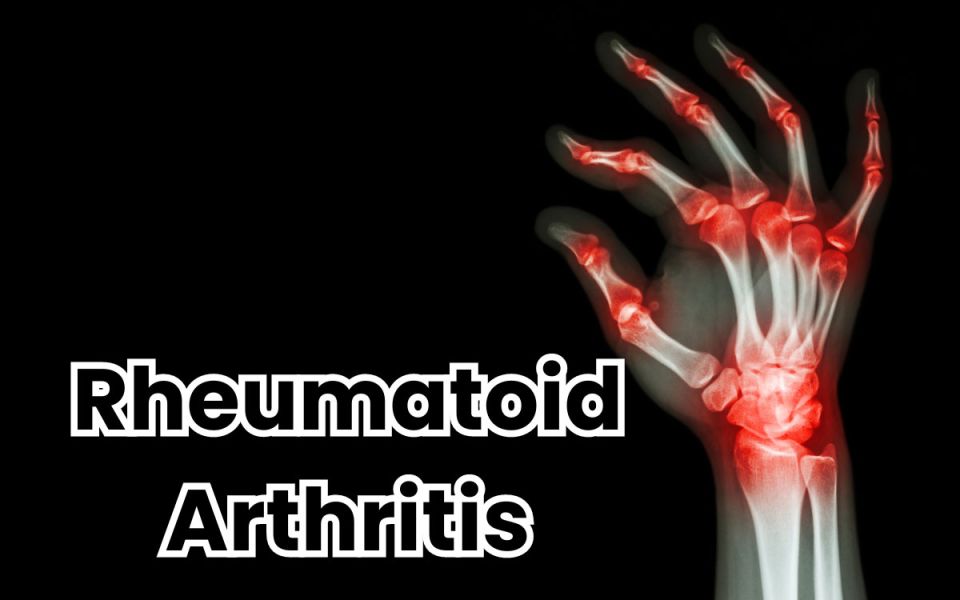Rheum for Improvement: Tackling Rheumatoid Arthritis

Rheumatoid arthritis (RA) is a chronic, incurable, autoimmune inflammatory disease that affects several joints at the same time. Around 1% of all adults have RA, and onset is usually between ages of 30 to 50. It affects mostly women. As stated above, RA is an autoimmune disease. Auto- meaning “self,” and immune referring to the immune system that fights off invaders and infections. Healthy tissue is attacked by the immune system, causing pain, stiffness, swelling, deformities, and reduced mobility through inflammation. These symptoms can lead to serious complications, including joint damage, destruction of the bones, damage to other organs, anxiety, and depression. Over time, rheumatoid arthritis gets worse, leading to drastically reduced quality of life for many patients. Let’s crack our knuckles and get into the weeds of how this works.
Before we pick our way through rheumatoid arthritis, let’s open the lid on what a joint is. Joints are where bones meet and allow movement. A little cavity around the bones is filled with a lubricating fluid called synovium that’s kept inside with an external bag-like tissue called the stratum fibrosum. Cells are few in number here, usually macrophagic cells that clean up the fluid and fibroblast-like cells that make the fluid and cartilage of the joint. When other cells, especially immune cells, get in, rheumatoid arthritis can occur.
The exact cause of rheumatoid arthritis is unknown, but genetic factors, environmental factors, and randomness play a part. Smoking, silica dust, diet, and infections are among the environmental factors. The microbiome may also play a role, but this is new science and is still being investigated. Regardless of the cause, the body starts detecting healthy joint tissue as a potential invader. B cells and T cells are activated by immune cells, which invade the synovium and stratum fibrosum. These cause inflammation, release dangerous enzymes, and activate bone-degrading cells. The macrophage and fibroblast-like cells start going haywire as well, secreting enzymes and building stiff, fibrous material where the lubricating synovium should be. The end result is swollen, damaged, painful joints that don’t function well.
So what can we do? Unfortunately, there are no cures for RA. But luckily, there are many types of treatments that may provide some relief. The first steps are those which require no medication. A diet rich in polyunsaturated fats, sleep, occupational therapy, physical exercise, and surgery may decrease pain, depression, and anxiety while increasing mobility. Medications can also provide significant relief. Anti-inflammatory medications including NSAIDs (like ibuprofen) and glucocorticoids (like hydrocortisone) target the end-product inflammation. Disease-modifying antirheumatic drugs (DMARDs) target parts of the immune system to prevent destruction and inflammation. T or B cells, inflammatory signaling molecules, or other parts of the system may be targeted by these medications. Different people tolerate each of these medications differently, and they all come with their own drawbacks. New mechanisms are being investigated that mimic systems in the body that cause inflammation in rheumatoid arthritis. With the help of remarkable volunteers in clinical trials, these medications may one day come to market and provide relief to joints that sorely need it.
Staff Writer / Editor Benton Lowey-Ball, BS, BFA
Click Below for ENCORE Research Group's Enrolling Studies
References:
Firestein, G. S. (2003). Evolving concepts of rheumatoid arthritis. Nature, 423(6937), 356-361. https://web.p.ebscohost.com/ehost/pdfviewer/pdfviewer?vid=0&sid=cd003d32-a392-495f-80ca-4cd4f1a41716%40redis
Iwanaga, T., Shikichi, M., Kitamura, H., Yanase, H., & Nozawa-inoue, K. (2000). Morphology and functional roles of synoviocytes in the joint. Archives of histology and cytology, 63(1), 17-31. https://www.jstage.jst.go.jp/article/aohc/63/1/63_1_17/_article
Radu, A. F., & Bungau, S. G. (2021). Management of rheumatoid arthritis: an overview. Cells, 10(11), 2857. https://www.ncbi.nlm.nih.gov/pmc/articles/PMC8616326/
Scherer, H. U., Häupl, T., & Burmester, G. R. (2020). The etiology of rheumatoid arthritis. Journal of autoimmunity, 110, 102400. https://www.sciencedirect.com/science/article/pii/S0896841119308431
Tsaltskan, V., & Firestein, G. S. (2022). Targeting fibroblast-like synoviocytes in rheumatoid arthritis. Current opinion in pharmacology, 67, 102304. https://www.ncbi.nlm.nih.gov/pmc/articles/PMC9942784/



